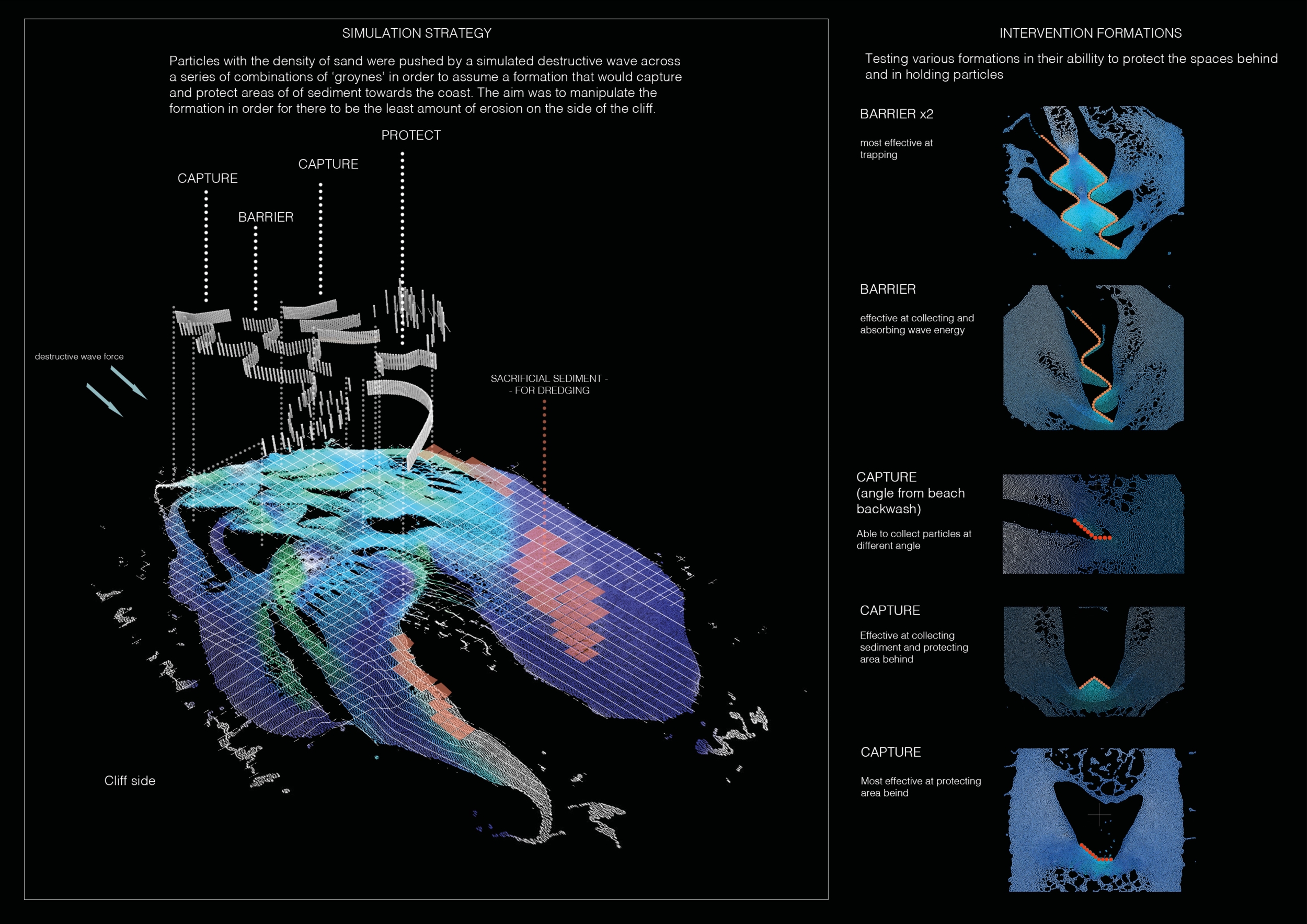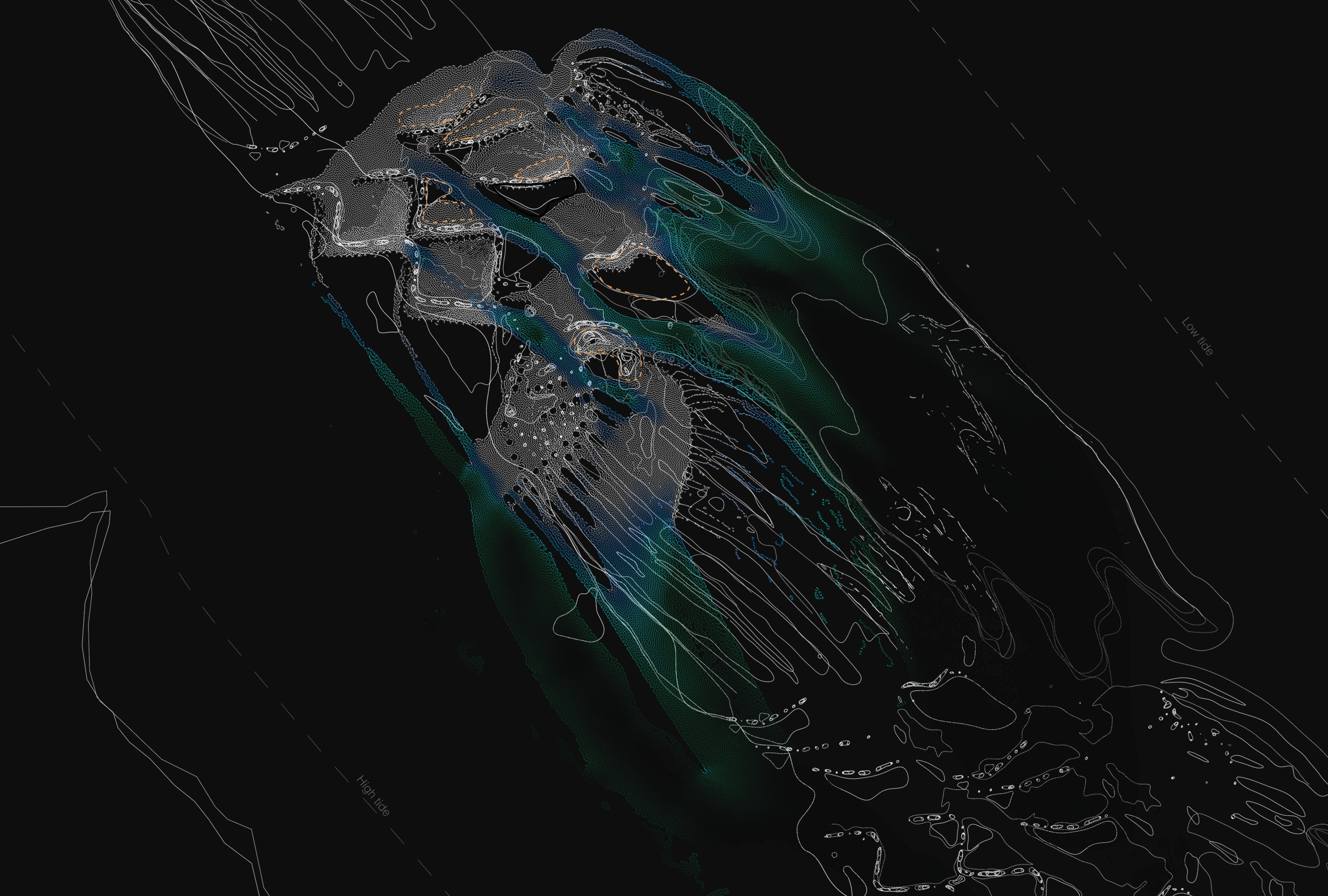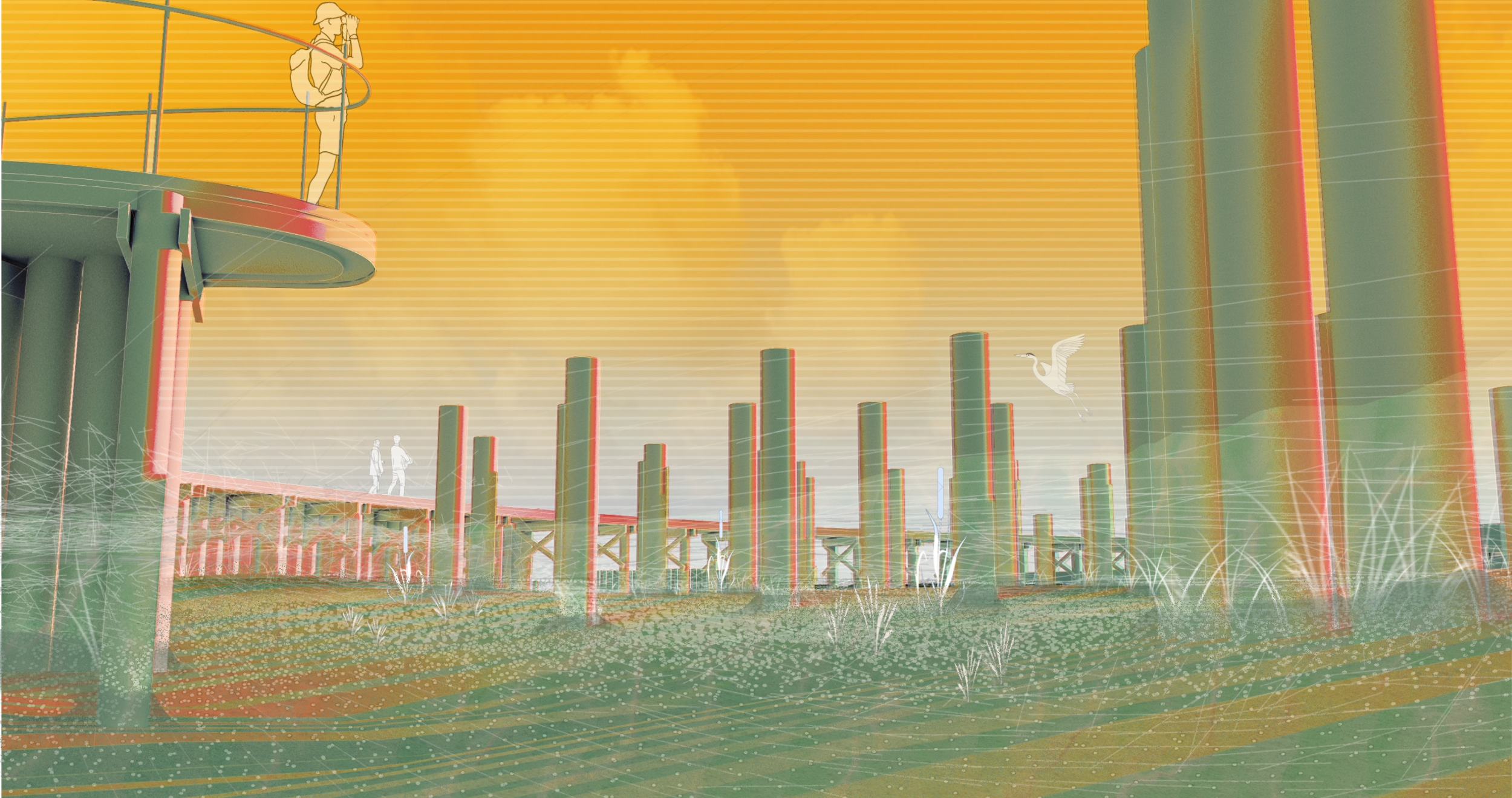Air, Architecture + Other Climates
[50.0°to 61.0° N : United Kingdom] : Carbon Transitions- 2020/21
John Cook, Ben Pollock + Laura Nica
︎︎︎ Home
︎︎︎ Previous // Next ︎︎︎
Justyna Lesny
![simulation investigating seabed sediment disturbance from dredging and tidal power.]()
The Sediment Reserve

The Holderness Coast, East Yorkshire UK
A total of 3000km of UK coastline is under the threat of erosion and at an increasing risk to rising sea levels. Underfunded and under defended, we in the UK are retreating from our own coastline. Brexit has fractured the UK’s fishing and tourism industry, which has meant that the most deprived areas of the UK are now the coastal towns with little funding to defend against their own disappearance. The relationship with our coast needs rebuilding.
As a response to the Blue New Deal and post-Brexit tensions over our fishing waters, the project proposes a model that uses a combination of coastal erosion management methods to reinstate the pride in our coastal towns by uncovering alternative opportunities at the boundary between sea and land. Through careful simulations and research into the techniques used in the sea aggregate extraction industry, this scheme more sustainably reclaims land in a way that is applicable to all sides of our shrinking Island. Traditional extraction from our onshore resources is costly, so why not find a way to do it more naturally?
The Sediment Reserve is a response to the looming threats of climate change, the Blue New Deal and post-Brexit tensions over our fishing waters. The project proposes a model that uses a combination of coastal erosion management methods to reinstate the pride in our coastal communities by uncovering alternative opportunities at the boundary between sea and land. Through careful simulations and research into the sea aggregate extraction industry, we can predict the movement and location of accumulated sediment to more sustainably reclaim land anywhere.
The reserve is located on the fastest eroding coastline in Europe, the Holderness Coast. It showcases an opportunity to learn, watch and experience the movement of a powerful littoral drift where through a series of carefully placed interventions, we can slowly reclaim what has been lost. People are invited to walk the pier, become involved in the gradual growth of the saltmarshes, or watch how the aggregates that build our great cities are extracted. The gradual establishment of the saltmarsh is a product of a successful and protective coastal intervention. This scheme is an opportunity to capture carbon, welcome new coastal ecologies and to educate ourselves on the importance of the finite resources beneath our feet.









︎︎︎ Previous // Next ︎︎︎